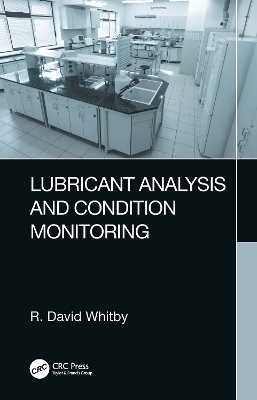
Lubricant Analysis and Condition Monitoring
CRC Press (Verlag)
978-1-032-15670-5 (ISBN)
Almost all mechanical devices used in every industry require lubrication. Lubricant Analysis and Condition Monitoring explains the benefits of identifying, planning, implementing and using lubricant and machine condition monitoring programmes to extend the lifetimes of both lubricants and machines, to achieve maximum productivity and profitability while reducing impacts on waste and the environment.
This book:
Offers a comprehensive overview of all types of tests used in lubricant condition monitoring programmes
Discusses monitoring the condition of all types of components, machines, equipment and systems used in all industries
Considers new and emerging machines, equipment and systems, including electric and hybrid vehicles
Suggests which tests to use for each type of machine, equipment or system and, just as importantly, which tests not to use
Provides practical examples of how to set up, run and manage condition monitoring programmes and how to achieve significant cost savings through planned and predictive maintenance schedules
Gathering vital information that users of lubricants need in one place, this book is of practical use to mechanical, maintenance, manufacturing and marine engineers as well as metallurgists, chemists and maintenance technicians.
David Whitby is Chief Executive of Pathmaster Marketing Ltd, a business development consultancy for the international downstream oil, gas and energy industries, which he founded in 1992. Pathmaster Marketing has advised clients in the UK, France, Germany, Belgium, Denmark, Poland, Hungary, Russia, the US, Canada, Israel, Saudi Arabia, Iran, South Africa, Brazil, Singapore, Malaysia, Thailand and Australia on business planning, business strategy, market development and technology commercialisation. Specialist sectors include lubricants, fuels, new energies and speciality chemicals. An Australian by birth, David began his career with British Petroleum, as a process chemist in a refinery in Western Australia. He worked for BP for 22 years in a number of management positions, including Marketing and Business Development Manager at Kalsep (an advanced separations company), Business Manager at BP Ventures, Project Leader for Industrial Lubricants at BP Research and Marketing Services Officer at Duckhams Oils. David was Programme Director for Lubricants Courses at the Oxford Princeton Programme and he ran the Advanced Lubrication Training Programme for the UK Lubricants Association. He has written numerous papers and articles on lubricants, has chaired and lectured to international conferences and directed over 120 training lubricants courses in more than 30 countries. He writes the bimonthly "Worldwide" column for Tribology and Lubrication Tribology, published by the US Society of Tribologists and Lubrication Engineers. In addition to running Pathmaster Marketing, David was Non-Executive Chairman of Microbial Solutions Ltd., a start-up from the University of Oxford, from 2007 to 2015, and a Non-Executive Director of the Sonic Development Company Ltd., from 1998 to 2003. His first book, "Lubricant Blending and Quality Assurance", was published by CRC Press in 2019. David has lived in Woking, Surrey, United Kingdom, for more than 38 years and is married with two daughters and four grandchildren.
1. Introduction
2. Reasons for Analysing Lubricants and Monitoring Their Condition
3. Sampling Lubricants
4. Testing New Lubricants
5. Testing Lubricants in Use
6. Chemical Tests for Lubricants
7. Physical Tests for Lubricants
8. Mechanical Rig Tests for Lubricants
9. Engine Tests for Lubricants
10. Condition Monitoring of Engines
11. Condition Monitoring of Gears and Transmissions
12. Condition Monitoring of Hydraulic Systems
13. Condition Monitoring of Compressors and Turbines
14. Condition Monitoring of Metalworking and Production Engineering Fluids and Pastes
15. Condition Monitoring of Automotive and Industrial Greases
16. Lubricant Condition Monitoring Programmes, Their Implementation, Benefits and How to Avoid Problems
| Erscheinungsdatum | 19.04.2022 |
|---|---|
| Zusatzinfo | 32 Tables, black and white; 44 Line drawings, black and white; 48 Halftones, black and white; 92 Illustrations, black and white |
| Verlagsort | London |
| Sprache | englisch |
| Maße | 156 x 234 mm |
| Gewicht | 734 g |
| Themenwelt | Naturwissenschaften ► Chemie ► Technische Chemie |
| Technik ► Maschinenbau | |
| Technik ► Umwelttechnik / Biotechnologie | |
| ISBN-10 | 1-032-15670-8 / 1032156708 |
| ISBN-13 | 978-1-032-15670-5 / 9781032156705 |
| Zustand | Neuware |
| Haben Sie eine Frage zum Produkt? |
aus dem Bereich


